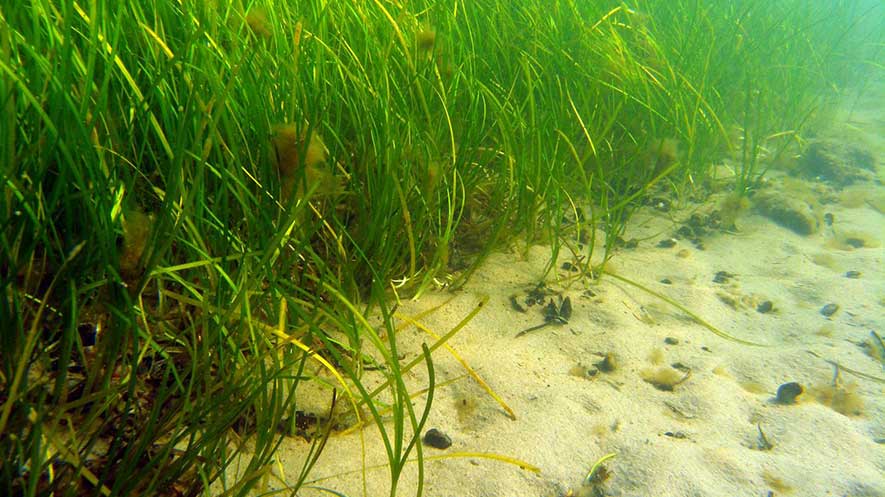“We discovered that eelgrass organic carbon stocks were comparable to organic carbon stocks of tropical seagrass species, as well as mangroves, saltmarshes and terrestrial ecosystems,” said MSc Emilia Röhr who led the network along with Assoc. Prof. Christoffer Boström from Åbo Akademi University and Prof. Marianne Holmer from University of Southern Denmark.
 Eelgrass blue carbon stocks compared to other marine and terrestrial ecosystems. Data sources: Kennedy and Björk, 2009, Fourqurean et al., 2012, Duarte et al., 2013, Röhr et al., 2018. © Emilia Röhr/Åbo Akademi University
Eelgrass blue carbon stocks compared to other marine and terrestrial ecosystems. Data sources: Kennedy and Björk, 2009, Fourqurean et al., 2012, Duarte et al., 2013, Röhr et al., 2018. © Emilia Röhr/Åbo Akademi University
On average, eelgrass meadows stored 27.2 tons of organic carbon per hectare, although the variation between the regions was considerable (from three to 265 tons per hectare). Hotspots for carbon sequestration were identified especially in the Kattegat-Skagerrak region, and southern parts of the Baltic Sea where the organic carbon stocks were over eight times higher, than in the Archipelago Sea of Finland.
The high carbon storage capacity of eelgrass meadows urges for protection and restoration of this unique ecosystem. Especially in the areas with the highest carbon stock capacity, they deserve recognition as part of global carbon marketing programmes.
“Terrestrial forests are well known for their capacity to store carbon (green carbon), while the so-called blue carbon stored and sequestered by coastal vegetated ecosystems, such as mangroves, saltmarshes, macroalgae and seagrasses, have received much less attention”, says Röhr.
“Although these cover only 0.5 percent of the seafloor, their carbon storage capacity accounts for more than 55 percent of the carbon stored by photosynthetic activity on Earth.”
In the marine systems, the blue carbon species alone account for up to 33 percent of the total oceanic CO2 uptake. In contrast to terrestrial soils, which usually store carbon up to decades, the carbon stored in blue carbon ecosystems may persist for timescales of millennia or longer and thus, contribute significantly to climate change mitigation and alleviation of the rising atmospheric carbon dioxide concentrations. Despite the importance of these ecosystems, to date, none of them are included in the global carbon trading programmes. Alarmingly, in the past 50 years, at least 1/3rd of the distribution area of coastal vegetated ecosystems has been lost.
Source: Åbo Akademi University

